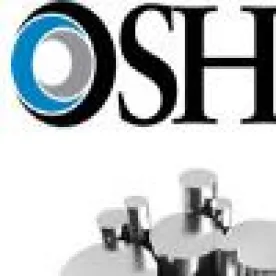OSHA has recently issued several memoranda updating guidance on its Process Safety Management (“PSM”) standard. On June 5, 2015, OSHA issued a memorandum to Regional Administrators explaining how inspectors should enforce recognized and generally accepted good engineering practices (“RAGAGEP”) requirements. Among other things, OSHA explained that when an employer’s internal standards are more stringent than the relevant published RAGAGEP and the employer fails to follow its own more stringent internal requirements, OSHA may cite the employer under the relevant section of the PSM standard. A copy of the June 5, 2015 memorandum can be found online.
Also on June 5th, OSHA issued a memorandum to Regional Administrators revising its enforcement policy on the concentration that a chemical present in a process must have in order to determine whether the chemical is at or above the threshold quantity listed in Appendix A of the PSM standard. Recognizing the ambiguity that exists for the 126 out of 137 chemicals that do not have a minimum concentration listed along with their chemical names, OSHA has decided that a 1% concentration test is appropriate for employers to determine if the chemical in the process is at or above threshold limits and therefore covered by PSM. Thus, the new enforcement policy is as follows:
In determining whether a process involves a chemical (whether pure or in a mixture) at or above the specified threshold quantities listed in Appendix A, the employer shall calculate:
(a) the total weight of any chemical in the process at a concentration that meets or exceeds the concentration listed for that chemical in Appendix A, and
(b) with respect to chemicals for which no concentration is specified in Appendix A, the total weight of the chemical in the process at a concentration of one percent or greater. However, the employer need not include the weight of such chemicals in any portion of the process in which the partial pressure of the chemical in the vapor space under handling or storage conditions is less than 10 millimeters of mercury (mm Hg). The employer shall document this partial pressure determination.
In determining the weight of a chemical present in a mixture, only the weight of the chemical itself, exclusive of any solvent, solution, or carrier is counted.
A copy of this June 5, 2015 memorandum, which provides examples to illustrate the new policy, is available here.
OSHA issued its third memorandum related to PSM on July 22, 2015. This memorandum revises OSHA’s interpretation of the retail facilities exemption of the standard by expanding the number of retail facilities that are covered. Prior to this change, “an establishment was exempt from PSM coverage if it derived more than 50 percent of its income from direct sales of highly hazardous chemicals to the end user,” otherwise known as the 50 percent test. Now, the retail facilities exception applies only to “facilities, or the portions of facilities, engaged in retail trade as defined by the current and any future updates to sectors 44 and 45 of the NAICS Manual.” The facilities that are exempt under sectors 44 and 45 of the NAICS Manual include food and beverage stores, electronics and appliance stores, and general merchandise stores. A copy of the July 22, 2015 memorandum can be found here.




 />i
/>i

